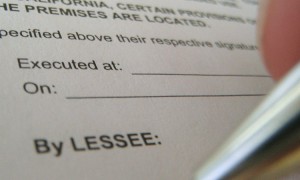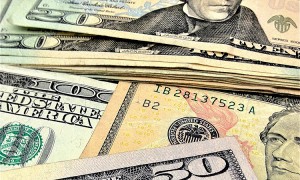You may be giddy about that new apartment you’re about to land, but no matter how excited you are, make sure not to overlook the apartment lease. A lease is a legal contract that needs to be taken seriously. You know how smartphone apps sometimes require you to verify that you understand their terms of service? You laugh as you click “OK,” because there’s no way you’re reading through a zillion pages of legal jargon for a 99-cent app. Signing an apartment lease is not the same thing. Rather, it’s one of those times when you have to read through the terms to ensure that you thoroughly understand them.
Listed below are a few things to keep an eye out for when signing your lease:
- Find out the length of the lease term. Most rental lease terms cover one- or two-year periods (although 18-month leases aren’t uncommon). If they’re getting a good deal on the apartment, many renters try to lock in as long a lease as possible in order to ensure that they’re able to continue paying the same rate.
- Be clear about the renewal policy for the lease. Some landlords are happy to keep the rent at the same level year after year in order to retain good tenants, and they’ll write a renewal clause into the lease stipulating that the rent will remain the same if the tenant decides to renew. On the flip side, there could be an escalation clause. That would mean that the rent would go up a certain percentage each time you renewed your lease. That bump in rent may be a few bucks, or it may be a substantial increase.
- Make sure that what the landlord told you that you could or could not do in the apartment is clearly outlined in the lease. Once the lease is signed, you’re obligated to pay the rent through the end of its term. Read the lease thoroughly so that you’re not in shock when, after you move in, you find out that the landlord forbids you to paint over the high-gloss black walls in the bathroom.
- Make sure the lease clearly states which utilities you’ll be responsible for and which ones will be handled by the landlord. For instance, in New York, most landlords pay for heating gas, while the tenants are responsible for cooking gas, but in some cases, the tenant is responsible for all of it. The landlord is responsible for the electricity in the public areas of the building, with tenants usually on the hook for their own electricity.
- Make sure that the pet policy is clearly outlined in the lease. You may not have a pet now, but if you want one in the future, or if a partner who has a pet moves in with you, you should know whether or not they’re allowed in the building.
- Make sure that it’s clearly outlined in the lease how much time you have to decide whether or not you’re going to renew before your lease is up.
- Make sure that the landlord’s right of access is clearly outlined in the apartment lease. You’d obviously want the landlord to enter the apartment in case of emergency, but what if your landlord wants to drop by on a whim? New York has no specific right-of-entry statutes pertaining to landlords, but generally tenants should receive 24 hours’ notice.
Keep these pointers in mind before you take the plunge with your new NYC apartment. Getting familiar with your apartment lease now will help ensure that your rental experience goes as smoothly as possible.
Image Source: Flickr
[cf]skyword_tracking_tag[/cf]







[…] Make sure that it’s clearly outlined in the lease how much time you have to decide whether or not you’re going to renew …read more […]